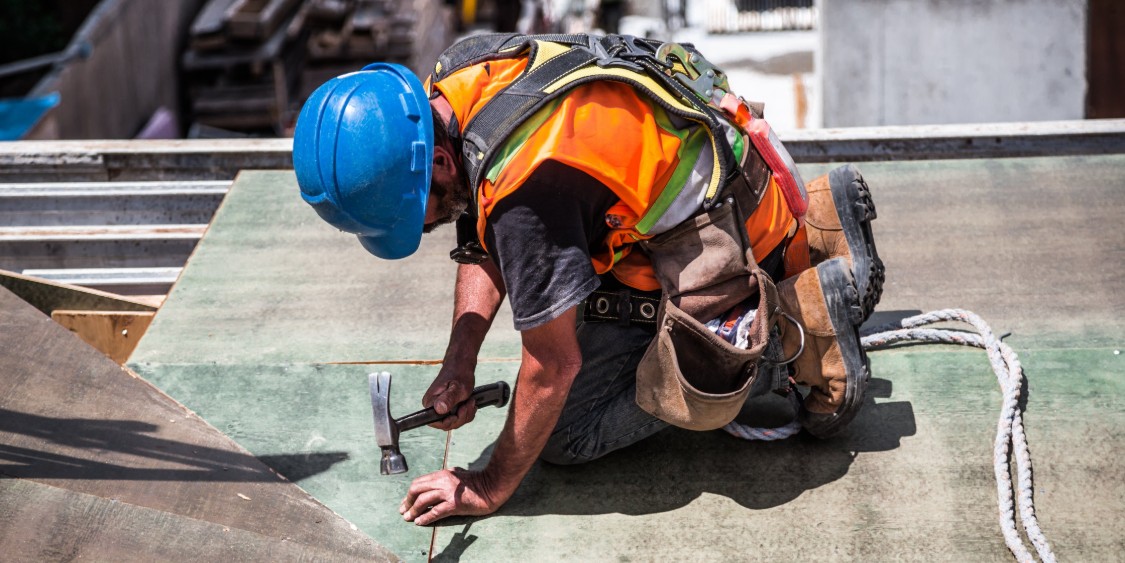Every province and territory has occupational health and safety legislation that requires employers to take proper precautions to prevent employee injuries. In addition, some jurisdictions require employers to enact a fall protection plan. Even if your jurisdiction doesn’t require you to have a fall protection plan, it’s very advantageous to create one.
Provinces That Require Fall Protection Plans
Employers in Alberta, British Columbia, Newfoundland and Labrador, Prince Edward Island, Saskatchewan and the Yukon Territory are all required to have a fall protection plan in place when certain circumstances are met (such as employees working at a height of more than 3 metres (9.8 feet)). Regulations in these jurisdictions generally go over the conditions that need to be met for a plan to be required, what is required in the plan, where the plan is to be posted and how to train workers on the plan.
Although Manitoba doesn’t have legislation that directly mandates fall protection plans, employers are required to implement fall-prevention work procedures because they have a mandatory duty to maintain employee health and safety in the workplace. These procedures must cover the same issues a fall protection plan is required to cover.
Currently, there are no requirements on fall protection plans for federal employers or employers in New Brunswick, the Northwest Territories, Nova Scotia, Nunavut, Ontario and Quebec.
If a Fall Protection Plan Isn’t Required, Why do I Need it?
Even if a fall protection plan isn’t required in your jurisdiction, it’s still an excellent idea to create one. Creating a plan will force you to address all potential fall hazards that your workers face, which will enable you to organize appropriate training for workers.
Creating a fall protection plan and taking proactive steps to protect workers from falls can also serve to protect your company in the event of a lawsuit arising from an employee injury. Your fall protection plan can serve as a form of proof that you have performed your due diligence and made good faith efforts to ensure worker safety.
When is a Fall Protection Plan Required?
It’s important to refer to the legislation written for your jurisdiction to find the exact conditions that demand a fall protection plan be in place for your company. Generally, there are three situations in which fall protection plans are required under existing provincial legislation:
- When workers are working at a height of 3 metres (9.8 feet) or more, or at a lower height if there are unusual circumstances that increase workers’ risk of falling.
- When a fall protection system (such as a guardrail or personal safety net system) needs to be utilized.
- When a fall arrest system cannot be used because it would create new hazards or it wouldn’t be feasible.
What Needs to Be Included in a Fall Protection Plan?
Your plan must be in writing and available at the work site to which it pertains. Inclusions in each plan vary by jurisdiction. However, Alberta is the jurisdiction with the most extensive list of requirements for a fall protection plan, which includes outlining:
- Existing fall hazards
- Fall protection systems that are/will be used
- Anchors that are/will be used
- The employer’s assertion that a worker will not hit the ground or an obstacle below the area of work, due to sufficient clearance distances
- Procedures that will be used when assembling, inspecting, maintaining, using and disassembling fall protection systems
- Rescue procedures
It is also important to train employees extensively on your fall protection plan. Providing a training program for each worker who may be exposed to fall hazards is a critical step to guaranteeing worker safety. The program should enable workers to recognize the hazards of falling, and train each worker on the procedures to follow in order to minimize these hazards.
Other Things to Include in Your Fall Protection Plan
When deciding what else to include in your fall protection plan, it’s helpful to think about the specific hazards your workers may experience, and then to address those in the plan. Your goal is to follow all necessary precautions in order to protect your workers before their job even begins. It may be useful to add precautions to your fall protection plan pertaining to:
- Unpredictable fall hazards caused by uneven sheathing, sudden gusts of wind, loose materials and surfaces that become slick when wet.
- Structural integrity risks; many workers have been injured when the surfaces they were working on collapsed under them.
- Staging materials risks; loose material and hand-held equipment can create tripping hazards on a surface at a height.
- Risks stemming from using the wrong equipment; each phase of a construction project has different challenges due to using different equipment, but the risk of falling often remains constant.
If you have questions about the occupational health and safety regulations in your jurisdiction, be sure to seek legal counsel. For more safety resources to help your workers avoid injury from falls, contact the Axis Insurance Group today.


